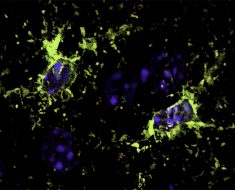In a recent study posted to the bioRxiv* preprint server, researchers investigated ACE2 (angiotensin-converting enzyme 2) levels among individuals with AD (Alzheimer’s disease).

Background
The coronavirus disease 2019 (COVID-19) pandemic has caused significant morbidity and mortality among older individuals across the globe. AD-associated cognitive decay is commonly observed among seniors, who are disproportionately affected by the severe acute respiratory syndrome coronavirus 2 (SARS-CoV-2) pandemic. Of interest, CNS (central nervous system)-associated signs and symptoms have been documented among COVID-19 patients.
About the study
In the present study, researchers investigated ACE2 protein levels among post-mortem human brain specimens of the parietal cortex from two patient cohorts, including individuals with AD.
Cohort 1 comprised 60 Religious Order study participants, for whom ACE2 concentrations were assessed based on (i) the level of clinically ascertained cognitive impairment as none (NCI, n=20), mild (MCI, n=20), or AD (n=20), (ii) AD diagnosis based on neuropathological factors, and (iii) antemortem cognitive assessment. In addition, the relationship between ACE2 levels with neurovascular markers was assessed. Gray matter BA7 (Brodmann area 7) area in the posterior region of the parietal lobe cortex was examined.
In total, 21 tests were conducted to assess the cognitive function of every individual, including the assessment of three neuropathological parameters, i.e., Thal scores for assessing the accumulation of Aβ plaques, Braak scores for assessing neurofibrillary tangle pathological findings, and CERAD scores for evaluating neuritic plaque pathological findings, and the ABC score, a composite of the three scores.
Cohort 2 comprised 82 individuals, for whom the team investigated the association between angiotensin-converting enzyme 2 and messenger ribonucleic acid (mRNA) concentrations in the human brain among individuals diagnosed with AD based on the Braak scores. ACE2 localization was compared between the human and murine brains, and ACE2 levels were evaluated in the triple transgenic murine model with AD neuropathology (3xTg-AD).
Gray matter inferior parietal cortex specimens, from BA39 (Brodmann area 39), from individuals with neuropathological disorders (based on Braak scores) were provided by the Harvard brain tissue resource center, the brain endowment bank, and the human brain and spinal fluid resource center in Boston, Miami, and Los Angeles, respectively.
Immunofluorescence and immunohistochemistry analyses were performed to assess ACE2 protein localization in post-mortem tissues of the human brain, followed by protein fractionation from homogenates of the parietal lobe cortex of humans. Subsequently, microvessels of the brain were isolated from 57 specimens (of the first cohort), and RNA extracted from the specimens was subjected to Western blot and RT-qPCR (quantitative reverse transcription-polymerase chain reaction) analysis.
Results
Antibodies eBook

Greater ACE2 protein and mRNA levels were observed among individuals diagnosed with AD based on neuropathological factors compared to controls. Soluble ACE2 in the brain correlated inversely with cognitive function scores, pericyte markers [PDGFRβ (platelet-derived growth factor receptor β) and aminopeptidase N (ANPEP)], and the caveolin1 marker, but correlated positively with insoluble phosphor-tau (S396/404 epitope) and soluble amyloid-β peptides (Aβ) levels.
The findings were indicative of probable ACE2 release from membranes related to pericyte-associated dysfunction at the BBB (blood-brain barrier). The development of human Aβ and tau neuropathology in 3xTgAD mice was inadequate to elevate murine ACE2 protein levels, even after combining with HFD and age, two known risk factors of COVID-19 and AD. ACE2 localized mainly in neuronal cells of the human brain but in micro-vessels in mice.
Greater ACE2 concentrations were observed in TBS (tris-buffered saline) protein-soluble fractions of AD patients compared to non-AD individuals. The difference was significant when only individuals with pCAA (parenchymal cerebral amyloid angiopathy) were assessed. ACE2 levels in micro-vessel-enriched and TBS-soluble fractions showed significant inverse associations with age- and sex-adjusted antemortem cognition scores. The levels of ACE2 mRNA were significantly elevated among individuals with Braak score-based AD diagnosis, indicative of transcriptional regulation.
Tris-buffered saline-soluble fraction angiotensin-converting enzyme 2 levels showed positive correlations with neuropathological, clinical, vascular and neuropathological markers for AD diagnosis, whereas detergent-soluble angiotensin-converting enzyme 2 proteins showed contrasting trends. The higher soluble ACE2 protein levels among AD patients of the ROS cohort were not age-driven. Greater TBS-soluble ACE2 levels in the post-mortem specimens correlated significantly with episodic memory deterioration, a clinical domain affected predominantly among AD patients.
Tris-buffered saline-soluble angiotensin-converting enzyme 2 levels showed a positive correlation with diffuse plaque accumulation, whereas the detergent-soluble ACE2 concentrations were negatively correlated with non-soluble phospho-TDP-43 protein levels (higher among AD patients) but showed a positive correlation with the soluble form of the protein’s C-terminal region concentrations (lower among AD patients). Neurovascular proteins showed inverse correlations with vascular ACE2 and TBS-soluble ACE2 and, therefore, with RAGE (advanced glycosylation end product-specific receptor) and BACE1 (beta-secretase 1).
Conclusion
Overall, the study findings showed that the individuals with AD showed greater soluble angiotensin-converting enzyme 2 levels, in the brain tissues, which may enhance the risk of SARS-CoV-2 infection in CNS tissues.
*Important notice
bioRxiv publishes preliminary scientific reports that are not peer-reviewed and, therefore, should not be regarded as conclusive, guide clinical practice/health-related behavior, or treated as established information.
- Louise, R. et al. (2023) "Higher Angiotensin I Converting Enzyme 2 (ACE2) levels in the brain of individuals with Alzheimer’s disease". bioRxiv. doi: 10.1101/2023.01.17.524254. https://www.biorxiv.org/content/10.1101/2023.01.17.524254v1
Posted in: Medical Science News | Medical Research News | Disease/Infection News
Tags: ACE2, Angiotensin, Angiotensin-Converting Enzyme 2, Blood, Brain, Central Nervous System, Cognitive Function, Coronavirus, Coronavirus Disease COVID-19, Cortex, covid-19, Enzyme, Glycosylation, Growth Factor, Immunohistochemistry, micro, Mortality, Nervous System, Pandemic, Peptides, Platelet, Polymerase, Polymerase Chain Reaction, Protein, Receptor, Respiratory, Ribonucleic Acid, RNA, SARS, SARS-CoV-2, Seniors, Severe Acute Respiratory, Severe Acute Respiratory Syndrome, Syndrome, TDP-43, Transcription, Transgenic, Vascular, Western Blot

Written by
Pooja Toshniwal Paharia
Dr. based clinical-radiological diagnosis and management of oral lesions and conditions and associated maxillofacial disorders.
Source: Read Full Article





